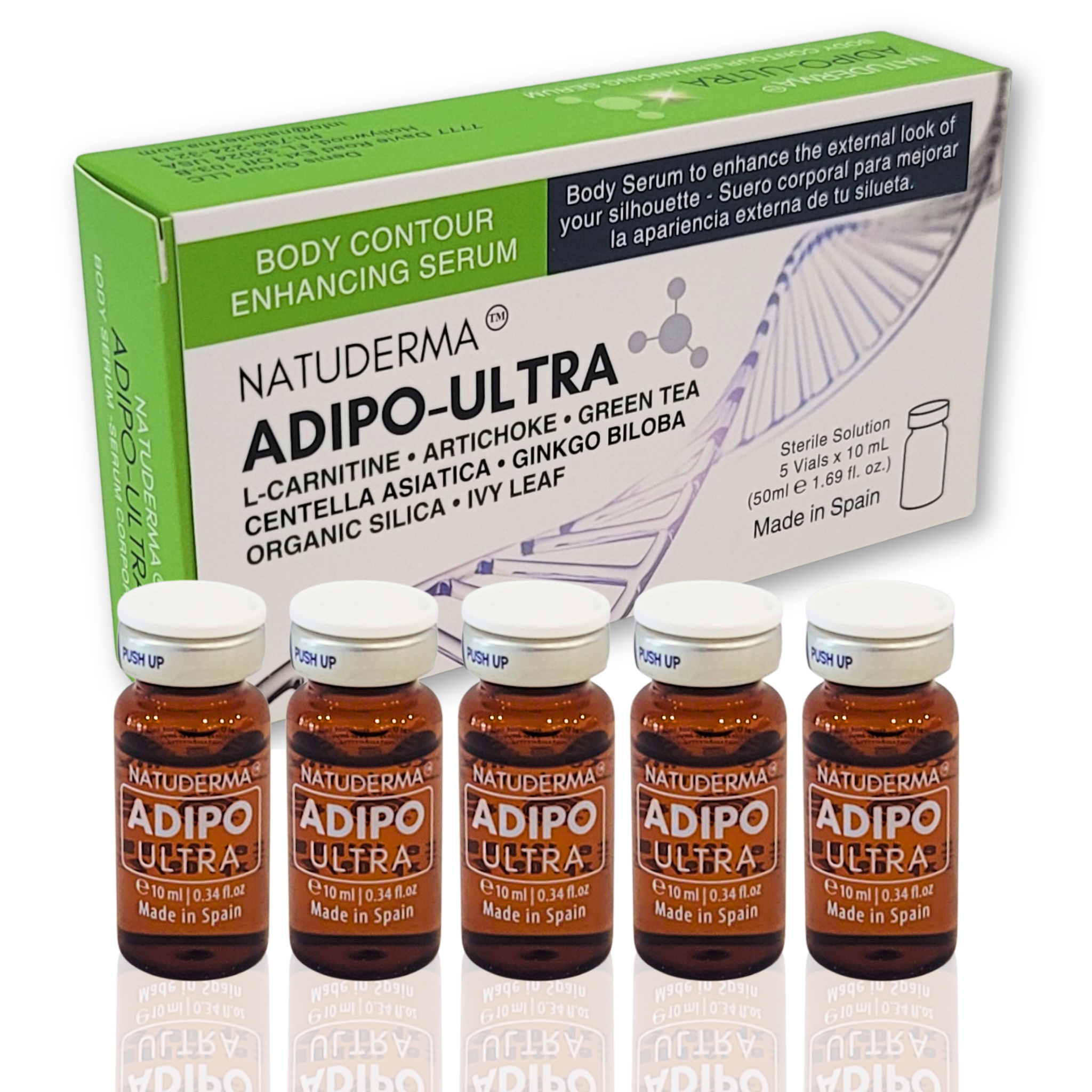Exosomas vs. PDRN: ¿Qué potenciador de la regeneración de la piel debería ofrecer en su práctica estética?

El auge de la estética regenerativa
La estética moderna está cambiando de la corrección temporal a la verdadera regeneración de la piel. Los tratamientos ya no se limitan a rellenar arrugas, sino que buscan reprogramar la piel a nivel celular para reparar el daño, restaurar su estructura y prevenir el envejecimiento futuro.
Dos de los ingredientes biológicamente activos más avanzados que lideran este cambio son el PDRN (polidesoxirribonucleótido) y los exosomas.
Pero ¿cuál es la verdadera diferencia? ¿Cómo funcionan? ¿Y cuándo conviene combinarlos?
Exploremos cómo cada uno beneficia a sus pacientes y cómo puede integrarlos en sus protocolos de tratamiento.
Entendiendo PDRN: El potenciador de la reparación del ADN
Qué es:
PDRN es un fragmento de ADN purificado extraído del esperma de trucha salmón mediante un proceso patentado que elimina proteínas y péptidos inmunogénicos.
Cómo funciona:
- Activa los receptores de adenosina A2A → reduce la inflamación, promueve la angiogénesis y mejora la microcirculación.
- Estimula los fibroblastos → aumenta la producción de colágeno, elastina y matriz extracelular.
- Proporciona nucleótidos para la vía de recuperación de ADN → apoya la reparación y proliferación celular.
Evidencia clínica:
- Se utiliza en úlceras diabéticas, recuperación de quemaduras y cirugía plástica para acelerar la reparación de tejidos.
- En medicina estética, mejora el grosor dérmico, la elasticidad, la hidratación y la remodelación de las cicatrices después de 3-4 sesiones.
Mejores indicaciones para sus pacientes:
✅ Piel envejecida con líneas finas y pérdida de elasticidad.
✅ Cicatrices de acné, cicatrices postraumáticas
✅ Recuperación post-láser o microagujas RF
✅ Piel sensible, inflamada o con tendencia a la rosácea
Entendiendo los exosomas: Los mensajeros celulares
Qué son:
Los exosomas son vesículas de tamaño nanométrico que las células secretan naturalmente para comunicarse entre sí. Contienen factores de crecimiento, péptidos y microARN que regulan las funciones de la piel.
Cómo funcionan:
- Transferir moléculas bioactivas a las células objetivo → modular el comportamiento celular.
- Favorece la regeneración activando fibroblastos y queratinocitos.
- Suprime la inflamación regulando la señalización inmunitaria.
Beneficios clínicos:
- Mejora la textura de la piel, la pigmentación y la reparación de la barrera.
- Mejora la curación después de láseres ablativos, microagujas de radiofrecuencia y peelings químicos.
- Estimula la regeneración del folículo piloso en tratamientos del cuero cabelludo.
Mejores indicaciones para sus pacientes:
✅ Recuperación post-dispositivos energéticos (láseres, HIFU, RF)
✅ Pigmentación y tono desigual
✅ Tratamientos para el debilitamiento del cabello y el cuero cabelludo
✅ Piel con tendencia al enrojecimiento o muy reactiva
Diferencias clave entre PDRN y exosomas
|
Característica |
PDRN |
Exosomas |
|
Origen |
Fragmentos de ADN de salmón |
Vesículas secretadas por las células |
|
Mecanismo |
Reparación del ADN + activación del receptor A2A |
Comunicación celular + factores de crecimiento |
|
Mejor para |
Reparación de cicatrices, envejecimiento y piel sensible. |
Textura, pigmentación y cicatrización postoperatoria. |
|
Velocidad de los resultados |
Gradual y acumulativo a lo largo de las sesiones |
Brillo visible más rápido, recuperación del tiempo de inactividad más rápida |
|
Uso con dispositivos |
Microagujas, mesoterapia, radiofrecuencia |
Post-láser, microagujas RF, peelings |
|
Sinergia |
Mejora la estructura dérmica a largo plazo. |
Mejora la recuperación inmediata y el brillo. |
¿Por qué combinar PDRN + Exosomas?
Al combinarse, proporcionan una regeneración sinérgica :
- Los exosomas entregan factores de crecimiento para impulsar la actividad celular.
- La PDRN sustenta la reparación del ADN y la reconstrucción de la matriz a largo plazo
Es por eso que creamos Exosome-HA , que combina Exosomas + PDRN + Ácido Hialurónico para un potenciador regenerativo todo en uno ideal para el envejecimiento, la pigmentación, las cicatrices y la recuperación posterior al procedimiento.
Células madre de orquídea: otra capa de protección
Para los pacientes preocupados por el estrés oxidativo, el daño ambiental y la pérdida de elasticidad , la combinación de PDRN con células madre de orquídea ofrece un poderoso apoyo antioxidante y protección del colágeno.
Natuderma PDRN‑HA combina PDRN + células madre de orquídea + ácido hialurónico para un rejuvenecimiento antioxidante + reparación de la barrera.
Protocolos sugeridos para profesionales
- Microagujas + Exosoma_HA
- 0,25–0,5 mm para rejuvenecimiento general
- 0,5–1,0 mm para cicatrices y pigmentación
- Cuidado posterior: aplicar el sérum restante como mascarilla.
- Mesoterapia con PDRN‑HA
- 0,02–0,05 mL por punto. (Ej.: hasta 2 ml en rostro y 3 ml en rostro y cuello), enfoque en la dermis superficial.
- Cada 2-3 semanas, 3-4 sesiones
- Terapia combinada
- Exosoma_HA y PDRN‑HA alternativos para textura + elasticidad + reparación antioxidante
- Combínelo con láseres o microagujas de radiofrecuencia para reducir el tiempo de inactividad y mejorar los resultados.
¿Cuándo elegir cuál?
- Exosoma-HA → Recuperación post procedimiento, pigmentación, inflamación, resultados visibles más rápidos.
- PDRN‑HA → Piel madura, cicatrices, pérdida de elasticidad, estrés oxidativo.
Para obtener resultados integrales, combine ambos en sesiones alternas.
¿Por qué ofrecerlos en su clínica?
✅ Alta satisfacción del paciente : brillo visible + regeneración a largo plazo
✅ Flujo de ingresos adicional : fácil venta adicional con paquetes de microagujas, RF y láser
✅ Tiempo de inactividad mínimo, alto perfil de seguridad
Conclusión para profesionales
Tanto PDRN como Exosomes son agentes regenerativos de próxima generación que van más allá de los potenciadores de la piel tradicionales.
Al comprender sus mecanismos e indicaciones , puede diseñar tratamientos que no solo rejuvenezcan sino que reparen y protejan la piel de sus pacientes para el futuro.
Para protocolos avanzados , combine Exosome_HA para la comunicación celular y la recuperación rápida con PDRN-HA para la reparación profunda del ADN y el rejuvenecimiento antioxidante.
Próximo blog: Cómo crear un protocolo completo de PDRN + exosomas para microagujas, mesoterapia y recuperación post-láser







Dejar un comentario